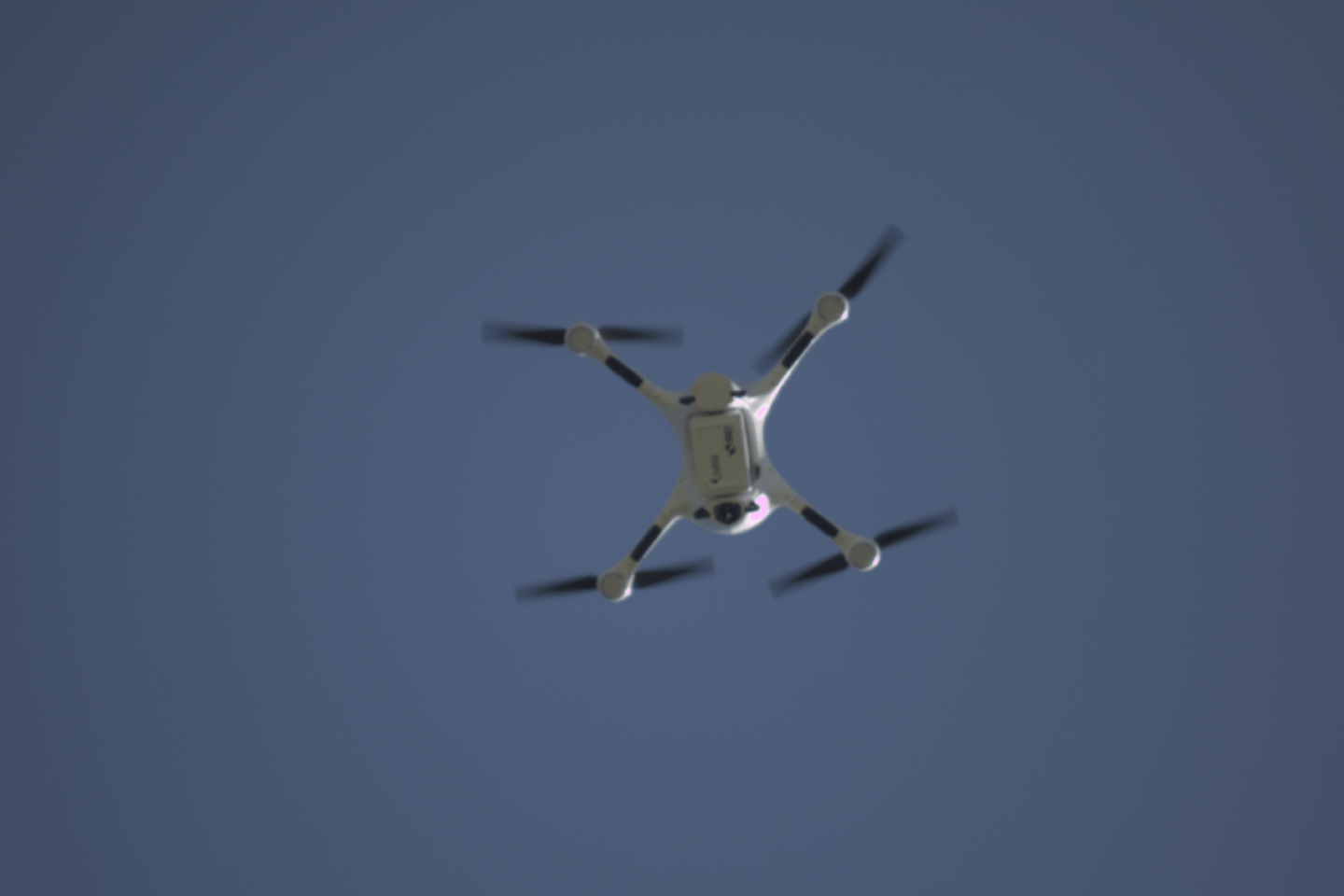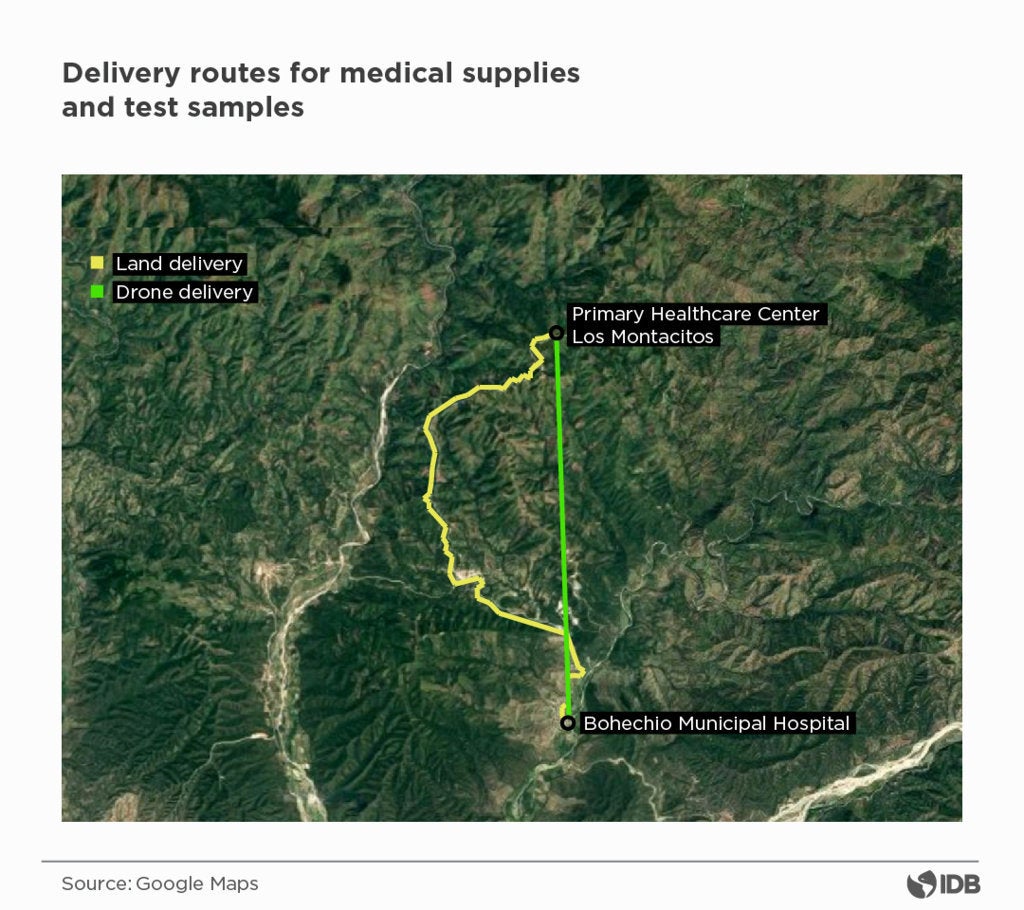
In the mountains of the Dominican Republic, almost 400 kilometers west of Santo Domingo, there is a town called San Juan de la Maguana. With a rural population of more than 40%, San Juan’s economy is powered on agricultural work and livestock, so much that it earned a reputation as the island’s "Granary of the South".
For an average sanjuanino from the Montacitos area—right on the slopes of Pico Duarte, the highest in the Dominican Republic—monitoring their insulin levels or blood cholesterol can turn out to be a complete adventure. Patients have to drive more than 40 minutes to one of the two hospitals which have the capacity of analyzing medical samples. This, without considering possible river floods that cut road access, or the trip back to the hospital to pick up results. Finally, a simple task for those who live in urban areas ends up becoming an odyssey for those who live in isolated, rural areas of the island—especially for the elderly, pregnant women and people with reduced mobility who need to monitor their health periodically.
"The biggest headache for the Ministry of Health was to improve the infrastructure in locations as distant as San Juan de la Maguana, where people do not go to hospitals because it’s hard to access them," explains Orlando Pérez, director of the business incubator Emprende. The project is supported by IDB Lab, the innovation laboratory of the Inter-American Development Bank Group.
"So we asked the population if they would be willing to perform these exams if we take their samples to the nearest primary care centers. And the answer was yes," says Pérez, who is in association with the National Health Service of the Dominican Republic, Matternet, WeRobotics, the Santo Domingo Cybernetic Park and LionBridge Capital.
Photo Gallery: the journey of a blood sample traveling by drone
The project
The answer was drones. Just like that, Matternet and WeRobotic individually selected three different models of autonomous drones capable of moving up to six pounds of medical samples at 25 miles per hour, at an altitude of 1,300 feet—finally connecting by air to eight rural primary care centers with the three hospitals in the city.
However, before deciding whether this system could be implemented, each team conducted tests to determine if the samples suffered alterations during the flight. They also wanted to evaluate time and money efficiency, and its implementation feasibility at the national level.
In 120 seconds: how did they do it? (In Spanish)
For the tests, they established a pioneering system for the Dominican health network. The executing team—coordinated with staff from hospitals and primary care centers—developed a small box connected to the drone which would transport medical supplies and samples. The Matternet team's device flew from the Bohechío Hospital to the primary care centers of Montacitos and El Coco. The one from WeRobotics flew from Vallejuelo and Juan de Herrera Hospitals to the primary centers of Derrumbadero, Colonia and La Jagua, where blood samples were taken from patients and returned to the hospital in two groups: one flew on drones and the other traveled by land. This way the team could determine if the flight altered the medical results or not.
Map: from Los Montacitos to Bohechio Hospital, drone vs. land routes

Almost two years after the start of the project, the team led by Orlando has already carried out three pilots in three different areas of the country: a total of 56 tests were carried out, in which only one suffered slight alterations after the flight. The transfer time was reduced by more than 30% and its cost decreased between 35% and 40%, according to team estimates.
"We have been able to demonstrate the efficiencies generated by the use of drones to disseminate their scaling and potential replication," says Orlando. Only in San Juan de la Maguana, the use of this technology would provide services to more than 350 people who struggle daily to access health care.
Video: bird's-eye view of the drone's flight
"Another benefit is that the cost per flight is decreasing. This means that as the number of flights increases, the cost will be lower," explains Smeldy Ramírez, an IDB Lab specialist in the Dominican Republic.
The project, which also won the prize for the most innovative team (ITA Award) at the IDB, is an innovative solution that not only reduces costs and time for health care services, but also demonstrated how patient care can definitely be improved. Furthermore, it showed how the shipment of medical supplies to remote areas can become time and economically efficient, positively impacting the lives of thousands of Dominicans
Currently, Orlando works with the Dominican Innovation Center for Drones to scale this project through its participation in the Association of Drones Professionals, an organization that operates in more than five countries in Latin America and the Caribbean. This will allow establishing protocols to standardize autonomous flights in the region, and to facilitate the implementation of these technologies to generate solutions to the needs of the public sector.
“We will be coordinating a fourth set of flights between hospital Bohechio and Montacitos rural clinic in mid 2019” says partner Patrick Maier of WeRobotics.
"The most important thing is for the population to understand that there is a permanent effort to improve these infrastructures, so that they can access them, while the authorities are willing to push initiatives like this one," says Orlando Pérez.